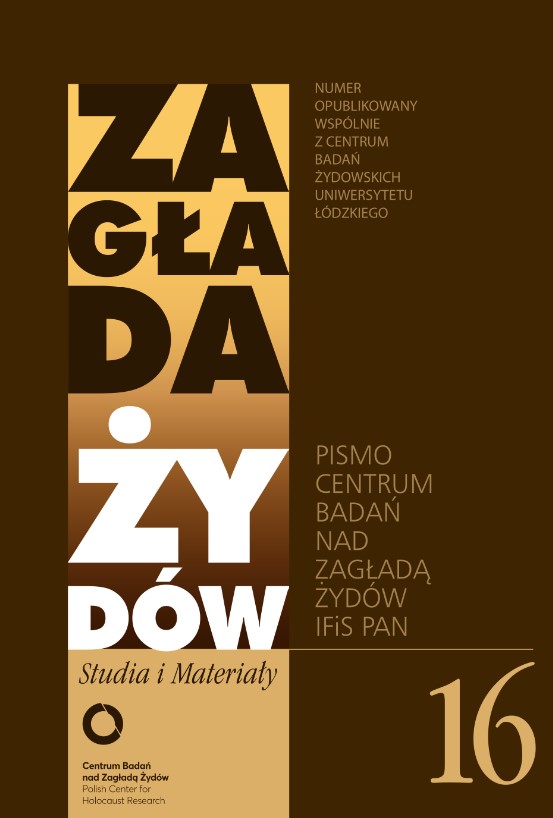Warunki działalności artystycznej plastyków w getcie łódzkim 1940–1944 w świetle źródeł: dokumentacji administracyjnej, wspomnień i relacji świadków
Conditions of artistic activity in the Łódź ghetto 1940– 1944 in the light of sources: administration documents, recollections and witness testimonies
Author(s): Irmina GadowskaSubject(s): Visual Arts, Local History / Microhistory, Interwar Period (1920 - 1939), WW II and following years (1940 - 1949), History of the Holocaust, History of Art
Published by: Stowarzyszenie Centrum Badań nad Zagładą Żydów & IFiS PAN
Keywords: art in the ghetto; Łódź ghetto; Holocaust; Brauner; Lejzerowicz; Kowner; Rumkowski; Jewish artists; Jewish art;
Summary/Abstract: In the years 1940–1944, several dozen artists were active in the Łódź ghetto. Those were renowned artists – graduates of schools and academies and talented amateurs, who did not gain recognition as artists before 1939. Some came from the Łódź area, some came from abroad – on transports from Prague, Berlin, Hamburg, Cologne or Vienna. In a closed housing district, artistic activity, subjected to administrative supervision was harnessed for propaganda purposes. In offices, institutions, departments and workshops, they made posters, commemorative albums, stamps, badges, emblems, and posters. On special commission, they painted portraits of Jewish dignitaries and German ghetto administration officials. Although the rationing of tools and materials: paints, cardboard, metals, ink was strictly connected with orders, the artists tried to create works that depicted the surrounding reality outside the official circulation and without censorship. The issue of artistic activity in the Łódź ghetto was discussed on the basis of examples of the functioning of selected departments and war-time biographies of the most renowned artists. This analysis makes use of different sources, from surviving archive documents to personal recollections, letters, testimonies, and existing works. Research results that, on the one hand, took into consideration individual information, and on the other – individual feelings of the victims and witnesses, are a starting point for further reconstruction of artistic activity in the Łódź ghetto.
Journal: Zagłada Żydów. Studia i Materiały
- Issue Year: 2020
- Issue No: 16
- Page Range: 83-117
- Page Count: 35
- Language: Polish

